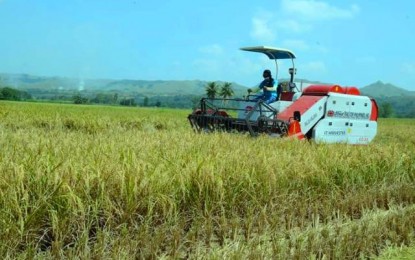
MANILA -- The Philippine Center for Postharvest Development and Mechanization (PHilMech) is shifting its strategy to "needs-based" approach to make rice farms more productive.
PhilMech chief science research specialist Rod Estigo, in a media interview on Thursday, said that through this approach, "it will be the farmers who will tell what machinery they need -- it's the farmer's choice."
PhilMech earlier created six clusters in the rice producing provinces of the country that would facilitate the implementation of the farm mechanization component of the Rice Competitiveness Enhancement Program (RCEP).
PhilMech Director Dr. Baldwin G. Jallorina said the six clusters would each be administered by a group that will be headed and staffed by professionals from the agency.
Under each cluster are the Farmer Cooperatives and Associations (FCAs) that would be the beneficiaries of the farm equipment that PhilMech will distribute under RCEP’s mechanization component.
“The country will be divided into six clusters to implement the project. Clusters will be headed by a senior PhilMech staff. They will be assigned as Cluster Coordinators. Each cluster shall compose of regional teams that will be organized composed of at least six to eight staff,” Jallorina said.
FCAs are the rice farmers cooperatives, associations duly registered with appropriate government agencies and which are composed primarily of agricultural producers, farmers, farm workers, agrarian reform beneficiaries who voluntarily join together to form business enterprises or non-business organizations which themselves own, control, and patronize.
PhilMech will also be seeking collaborators and cooperators to implement the mechanization component of RCEP, particularly the Department of Agriculture-Regional Field Offices (DA-RFOs) and local government units (LGUs).
A memorandum of agreement shall be forged with each DA-RFO and LGU to formalize the agreement and as a manifestation of their commitment in the implementation of the program.
Jallorina said there is an urgent need to increase the level of mechanization and improve the post-harvest systems of the country’s rice industry.
Based on studies by PhilMech, rice farming in the country has negligible levels of mechanization in planting, weeding, spraying, and harvesting in some regions. Notably, mechanical power is applied mostly in harvesting and land preparation, while manual transplanting is widely used as the method of planting.
Furthermore, sun drying is still preferred by farmers, probably from available solar power and high prices of mechanical dyers, which underscores the need to provide mechanical dryers to farmers to dry their palay (unmilled) harvests.
Surveys by the agency also show a low adoption rate among Filipino farmers for four-wheel tractors, mechanical transplanters and combine harvesters.
However, the use of mechanical transplanters in Thailand and Vietnam is also low as most farmers there use the direct seeding technology, which is seen to be more efficient and less costly than the transplanting method widely used in the Philippines.
The survey also showed the Philippines has high adoption on thresher and two-wheel tractors, implying the adoption of small machines by farmers is prevalent in the country.
Jallorina said the mechanization component of RCEP seeks to address the gaps in farm mechanization in the country’s rice farms, as it includes the distribution of larger farm equipment.
Under the Rice Tariffication Law, the mechanization component of RCEP will be getting PHP5 billion per year in the next six years or up to 2024 -- PHP3 billion would be allocated for the propagation and distribution of high-yielding seeds, training and capacity building of rice farmers, and PHP1 billion for credit support.
According to PhilMech, high investment cost appears to be a prime influence in the acquisition of farm equipment. As such, there is high ownership among Filipino farmers for low-cost items such as plow, harrow, cultivator, hand tractor and threshers.
In addition, most of the big dryers and rice mills are dominantly owned by private traders and processors while a small portion are owned by the famers’ cooperatives/associations through grant or soft loan from the government, it added.
Jallorina said the wide distribution of machines to rice farmers under RCEP would make them competitive against their counterparts in Thailand and Vietnam, which are the leading rice exporters today.
“Through increased mechanization, the cost of producing palay can be reduced by PHP2 to PHP3 per kilo and additional cost reductions can be made if rice farmers adopt higher-yielding rice varieties,” he said. (PNA)
